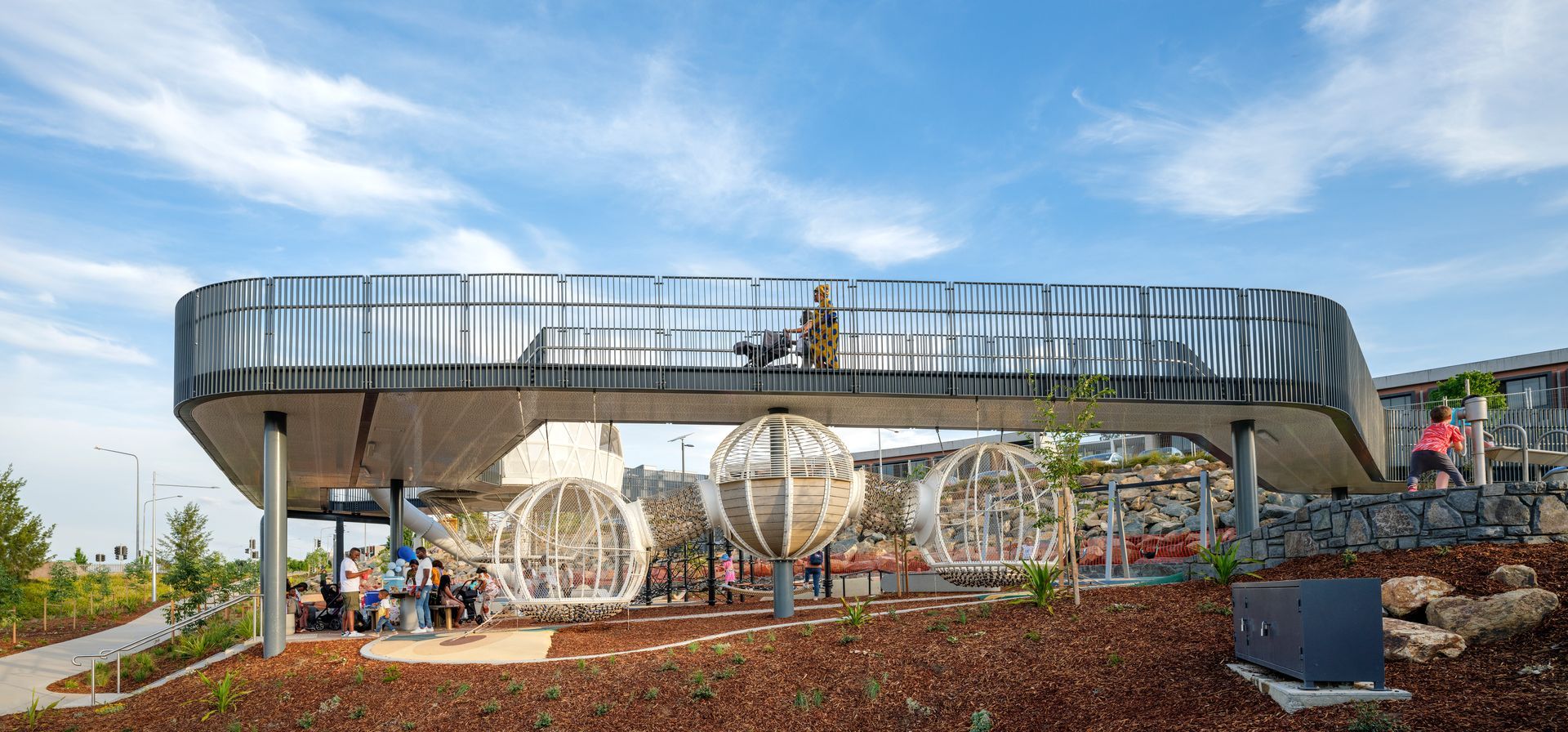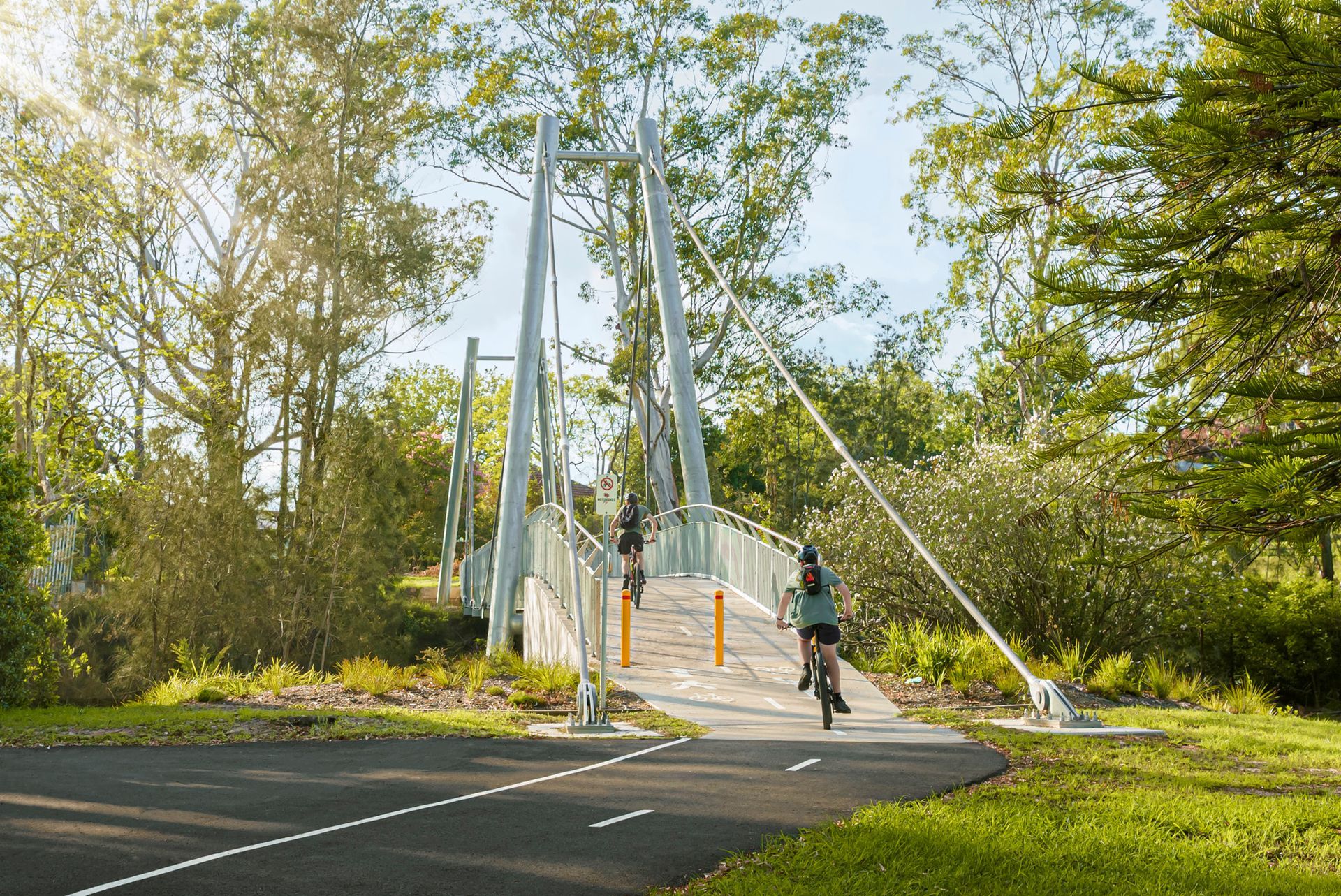The future of bridges is green.
Green bridges. No, they’re not covered in plants or grass. Rather, they’re part of a growing urban trend towards smaller and generally more cost-effective active transport structures that help to connect local communities like never before. Whilst they’re appearing all over the world, you don’t have to look far to see green bridges are flourishing in Australia – nowhere more so than south-east Queensland.
To explore why, we caught up recently with Dan Barr, Director at the Better Cities Group, a Gold Coast-based consultancy with deep insights into infrastructure and urban planning strategy in one of the fastest-growing regions in Australia – not to mention home to the 2032 Olympic Games.
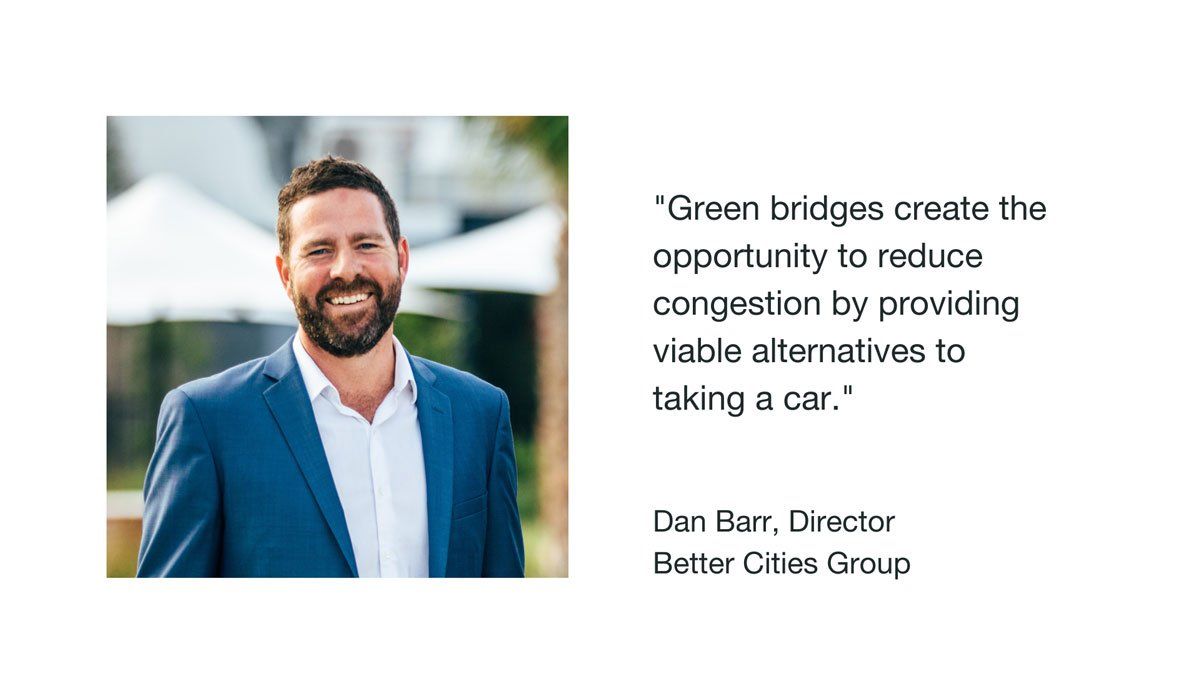
Fleetwood Urban: Thanks so much for joining us, Dan. How would you describe the concept of ‘green bridges’?
Dan Barr: I think at its simplest, it’s a type of bridge that supports active transport and excludes the motor vehicle. It’s all about promoting walking, running, cycling and, increasingly, shared micromobility vehicles like eScooters and eBikes which are experiencing rapid growth right now.
Fleetwood: Investment in green bridges is really accelerating across Australia. Why do you think that is?
Dan: Councils and planners are realising we can’t continue to build our way out of congestion. It just doesn’t work. Green bridges create the opportunity to reduce congestion by providing viable alternatives to taking a car. Reducing a 4km trip to 1km with green bridge infrastructure improves public transport uptake, reduces traffic and brings obvious health benefits for the people that use it.
The other big driver is the rise of shared micromobility, especially in radial cities like Brisbane and Melbourne. The technology is improving rapidly, increasing the range and performance of electric bikes and scooters while also making them a lot more accessible. As growing numbers of people make the switch away from cars, councils and governments will continue to invest more into community infrastructure like green bridges which, in turn, attracts even more users.
It’s already happened in Brisbane and I’m absolutely confident the same thing will happen in places like Sydney and Melbourne. I suspect we’re going to find that funds allocated to roads will be increasingly reallocated or reduced to provide greater opportunities for active transport and green bridge links. Car parks in the Brisbane CBD, for example, are already being turned into active travel connections.
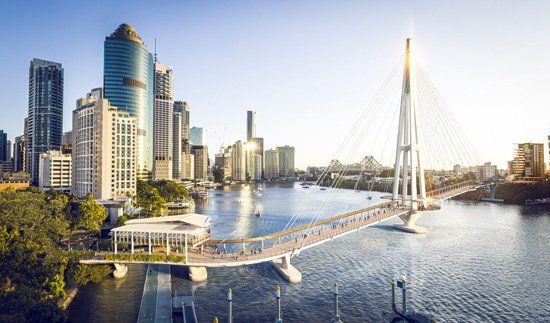
Kangaroo Point Green Bridge, Brisbane QLD
Linking Kangaroo Point and Brisbane CBD. Images courtesy of Brisbane City Council.
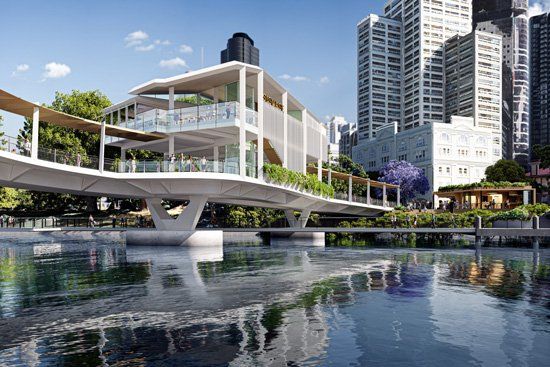
Fleetwood: Green bridges typically have smaller structural and environmental footprints which, assumedly, makes them more cost-effective?
Dan: That’s absolutely true. But just on that, I think it’s important to make a distinction. Some green bridges are intended as architectural showcases (with budgets to match). Their design is just as important as the function. If you look at the skyline of Brisbane, it’s really being defined by the beauty of the green bridge architecture along the river.
The other really important type of green bridges are the workhorse bridges that are purely about providing that community-linking function. They’re usually simpler and don’t have the same level of architectural input, or the price tag, but they still provide that feasible alternative to getting in the car and driving all the way around.
Fleetwood: Which urban planning scenarios are ideally suited to green bridges?
Dan: Green bridges really come into their own in communities with lots of water or other topography barriers. Places where you’re not able to easily align your active travel network with the road network. The Gold Coast is a great example. The city has more canals than Venice yet only three main ‘vertical’ roads – the Gold Coast Highway, Bundall Road and the Pacific Motorway – with all these ladders that go across it. You’re effectively pushing all the congestion of 700,000 people on to this ladder. This is why the City of Gold Coast is investing in a major program of green bridges – it’s a critical part of the future transport solution for the city.
Fleetwood: The green bridge concept seems so overwhelmingly positive. Are there many barriers?
Dan: The biggest one is NIMBY-ism. While communities are generally very supportive, property owners in the vicinity of drop-off points are always going to need to be convinced. At the front end, I think there’s a real opportunity for councils and other stakeholders to alleviate those concerns and be very clear about the benefits of the green bridges, both for the residents themselves but also from a wider LGA perspective, in terms of what the city is trying to do in providing those links. Advanced communication is essential.
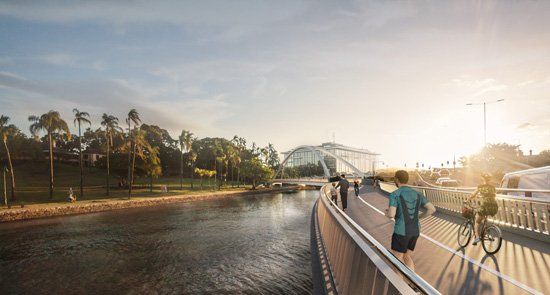
Breakfast Creek Green Bridge
Making it safer and more convenient to walk or ride along the river from Brisbane inner city to the northern suburbs. Images courtesy of Brisbane city council.
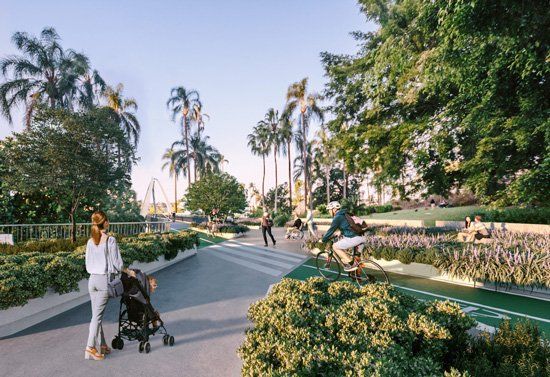
Fleetwood: Are green bridges happening all around the world?
Dan: Yes, they are. But green bridges are certainly not a new idea. Prior to 1930, bridges were for horses and carts, certainly not motor vehicles. Now we’re starting to see that shift back towards public transport and the reduced dominance of motor vehicles. Governments all over the world are aware of that, they know we can’t just keep building our way out of congestion, that’s been proven over and over again. People also have much higher expectations today around liveability and what governments, and even developers, should be providing them in terms of amenity and accessibility.
Fleetwood: That’s an interesting point. Well-designed active transport infrastructure can really help to attract people and investment?
Dan: Australia’s cities and LGAs are competing with each other – especially for knowledge workers who are often very interested in active transport. Congestion is not attractive, particularly when they have no other option. For people living within the ring of suburbia in our major towns and cities, the opportunity to have transport alternatives is becoming more and more essential. It’s a real point of difference.
It’s also important to remember there can be real economic development gains from linking destinations with green bridges. Here on the Gold Coast, we’ve seen some great infrastructure built recently between the
Home of the Arts (HOTA) precinct at Bundall and Chevron Island. It’s been hugely popular and I’d be very surprised if it hasn’t had a significant impact for traders on both sides, with people now able to go and have dinner and see a show, all without having to take their cars. It’s just another one of the many, many benefits of green bridges.
Fleetwood Urban offers a proven range of solutions for custom and off-the-shelf green bridge infrastructure.
Contact us today to discuss your project options.

HOTA, Home of the Arts Green Bridge
Green bridge infrastructure between HOTA precinct at Bundall and Chevron Island. Images courtesy of HOTA, Home of the Arts, Gold Coast QLD.
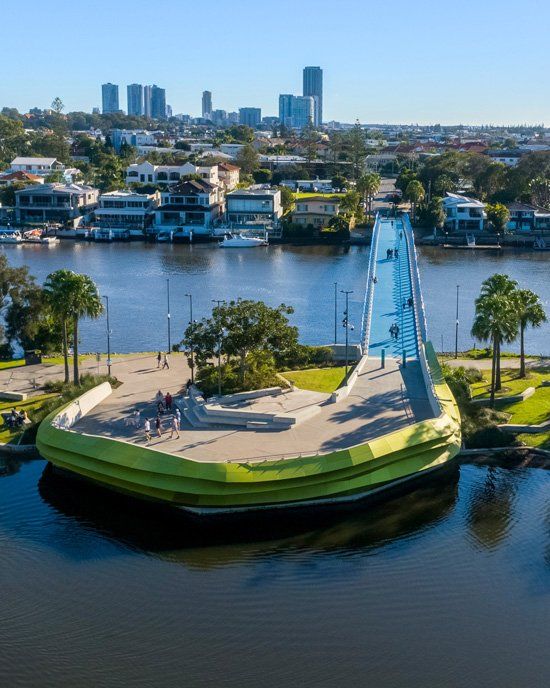
More from Fleetwood Files.
Explore
Certifications
Environmental Management : ISO14001
Quality Management : ISO 9001
OHS Management : ISO 45001
All Rights Reserved | Fleetwood Urban | Privacy Policy


